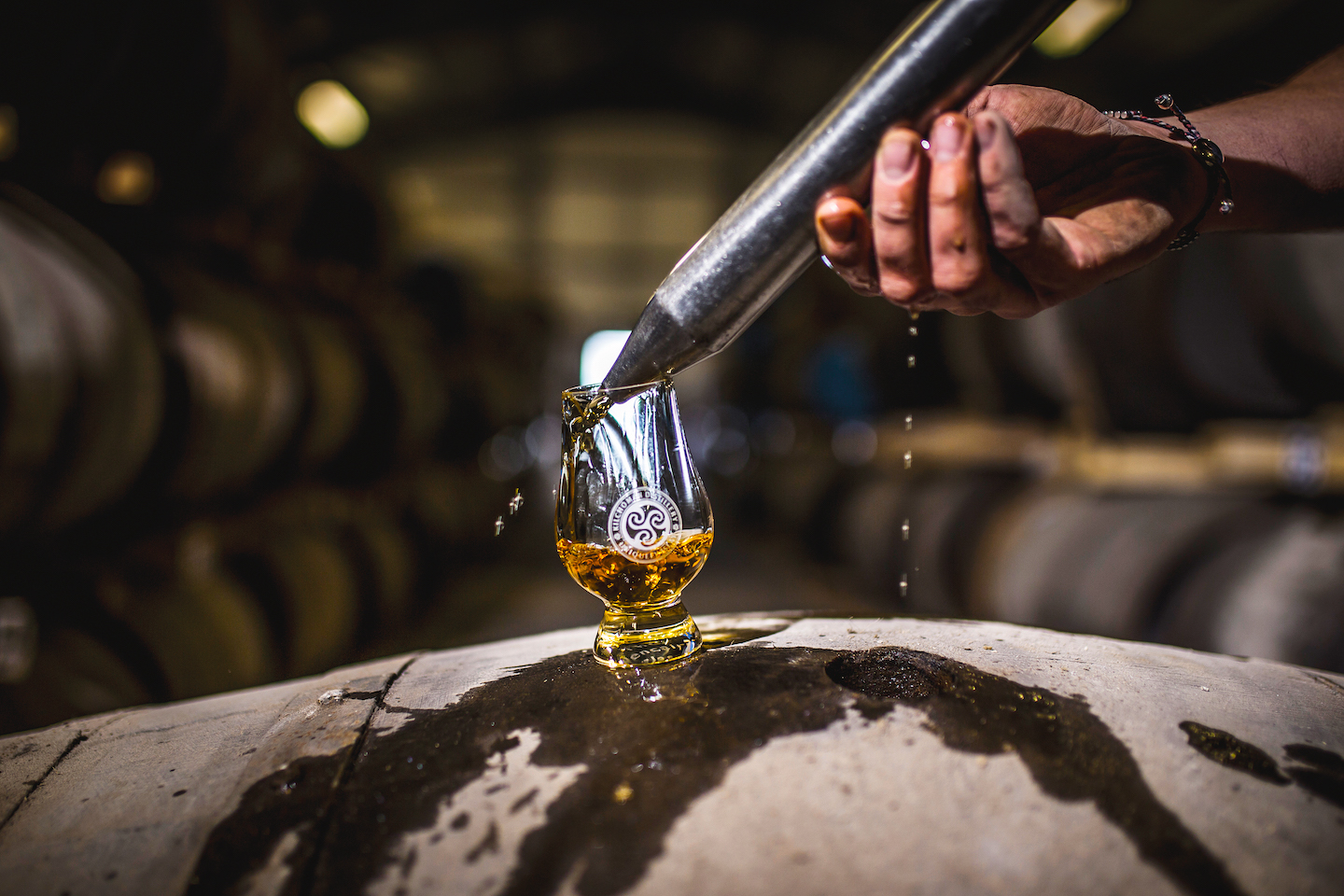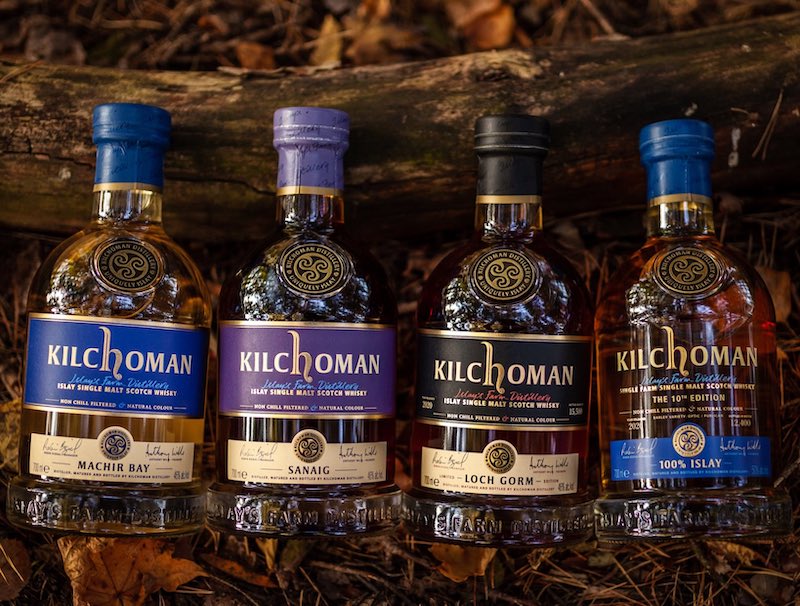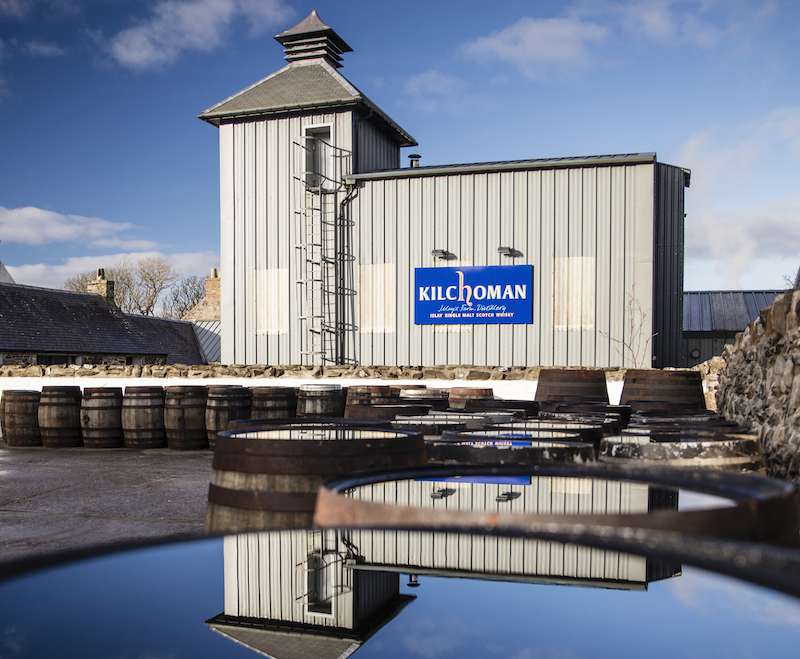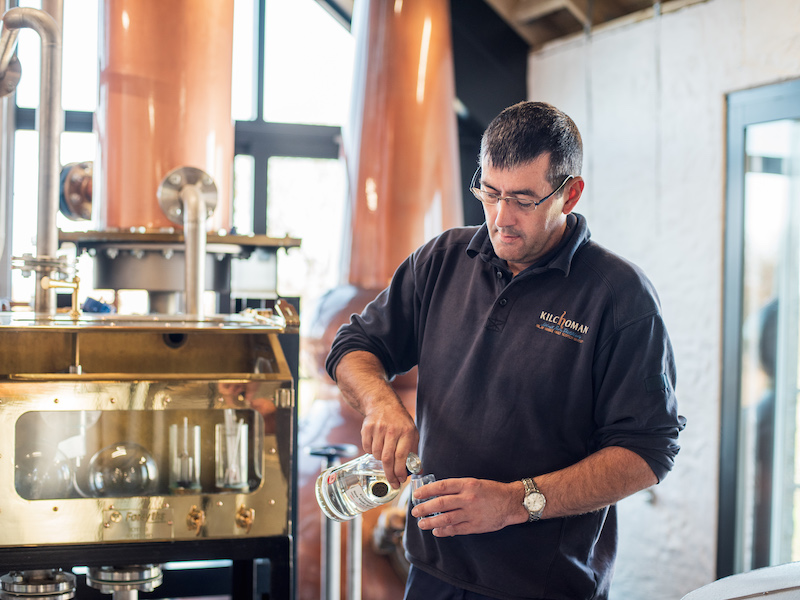
As one of Scotland’s smallest distilleries, Kilchoman's production is limited (All photos: Kilchoman)
The Scottish island of Islay, where smoky whiskies are from, owing to its peaty terroir, has not changed much over the years. While this is arguably how one would describe most of Scotland, this remote isle in particular — which, because of its location, does not welcome all that many tourists — is especially untouched. Winemaker Anthony Wills changed all that when he founded Kilchoman in 2005, making it the first whisky distillery to open on Islay in over 124 years.
Pronounced “kill-ho-man”, the baby of the generations-old scotch industry displays all that is great about the grassroots traditions of whisky distilling. It is one of only a handful of distilleries that still practise floor malting (a traditional process that predates the industrial revolution, also done at Laphroaig and Highland Park). Barley is also grown on the farm, making Kilchoman the only Islay distillery to complete all parts of the whisky-making process on-site.
kilchoman_bottles.jpeg

As one would imagine, Kilchoman is not in the business of making thousands of bottles a year for markets all over the world. As one of Scotland’s smallest distilleries, production is limited, although not altogether very small. “About 500,000 litres per annum,” comments marketing director Chloe Wood. “Not a lot, but not too shabby either.”
Wood was in Kuala Lumpur recently to unveil the Kilchoman Comraich programme, a global network of bars dedicated to the enjoyment of the brand’s single malts. As Comraich (the word means sanctuary in Scots Gaelic) establishments, KL watering holes The Whisky Bar in Changkat Bukit Bintang and Director’s Cut in Taman Tun Dr Ismail will serve a wide range of Kilchoman whiskies, including the very rare Comraich.
Does Kilchoman’s grain-to-glass identity translate very much to the wee dram once it is poured? We would argue that its youthful nature is actually the dominant feature — the whiskies are clear and light, underscored by varying influences of smoke and peat, depending on what you’re having. This makes the house’s whiskies infinitely drinkable, doing away with the alienating misconception that Islay malts are too strong for the average whisky drinker. In fact, its flagship Machir Bay single malt clocks in at a modest 50 ppm (parts per million of phenol, which gives peated whiskies their smoky undertone). In contrast, the Octomore 13.1 is malted to a stratospheric 137.3 PPM.
kilchoman-distillery-ext-2.jpg

At a tasting session led by Wood at the newly opened Director’s Cut, it is apparent that the smokiness is not even its most outstanding feature — we would say its complex flavour profile is. The Machir Bay, a combination of ex-bourbon barrels and Oloroso sherry butts, boasts the fragrance of cooked fruit on the nose, easing into lashings of sweet vanilla and green apples before it slides down one’s throat in a dazzling, lengthy finish.
A more recent release from Kilchoman is Sanaig, named after a small rocky inlet located north of the distillery. This whisky has a predominantly Oloroso sherry cask influence — helpfully indicated on the box so you know what you’re signing up for before you open the bottle — and is a beech wood colour when poured into a glass. On the nose, it’s the same soft-cooked fruits as Machir Bay but on the palate, expect a syrupy caramel profile with hints of vanilla. The finish is a little abrupt on this one, although it is much sweeter on the palate.
The exclusive Comraich bottling No 5, after which the bar programme is named, is the oldest of Kilchoman whiskies at seven years of age. Having spent its full maturation term in fresh port hogsheads and bottled at their natural cask strength of 55.5% ABV (alcohol by volume), this is a big whisky that manifests the very DNA of the distillery — dried fruits on the nose hint at its maturation in port casks combined with a light peatiness, smoke, plums and peaches on the palate and a rich, fruity finish. Due to its relative rarity, this bottling is only available by the dram and as part of a tasting flight at both The Whisky Bar and Director’s Cut.
copy_of_hires-004-0654.jpg

A family-run, independent distiller like Kilchoman has the potential to upend the industry with its deft moves — a marketing strategy like the Comraich bar network is a great example of parlaying our collective desires for the rarest and most exclusive wee drams into selling more scotch. Time will tell if Kilchoman’s whiskies are both style and substance — although at this stage, we’d say yes.
This article first apeared on Nov 28, 2022 in The Edge Malaysia.


